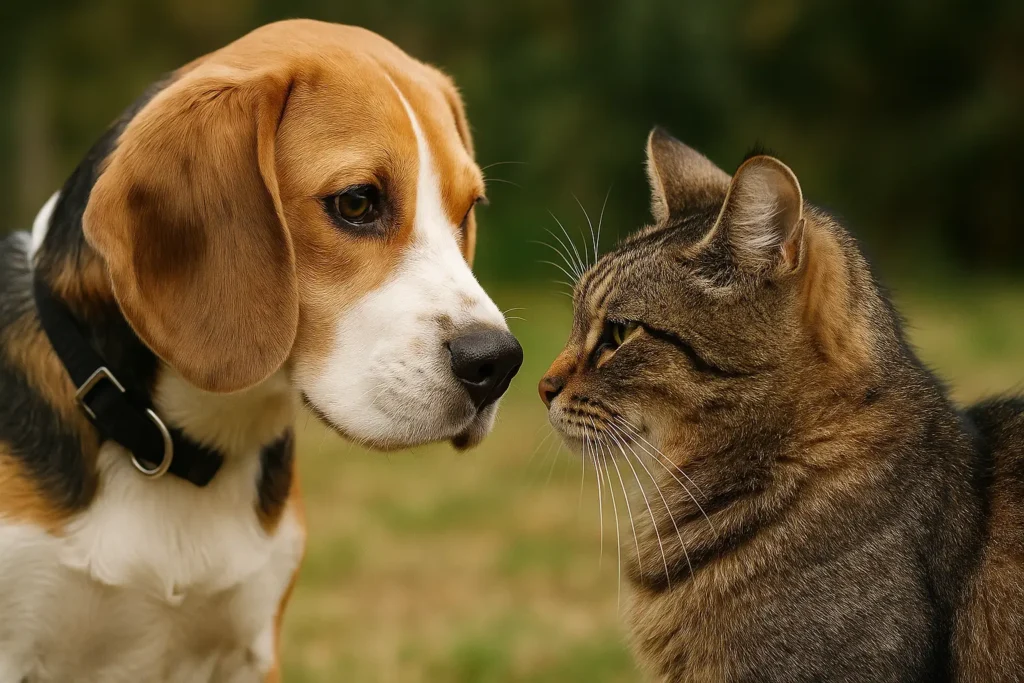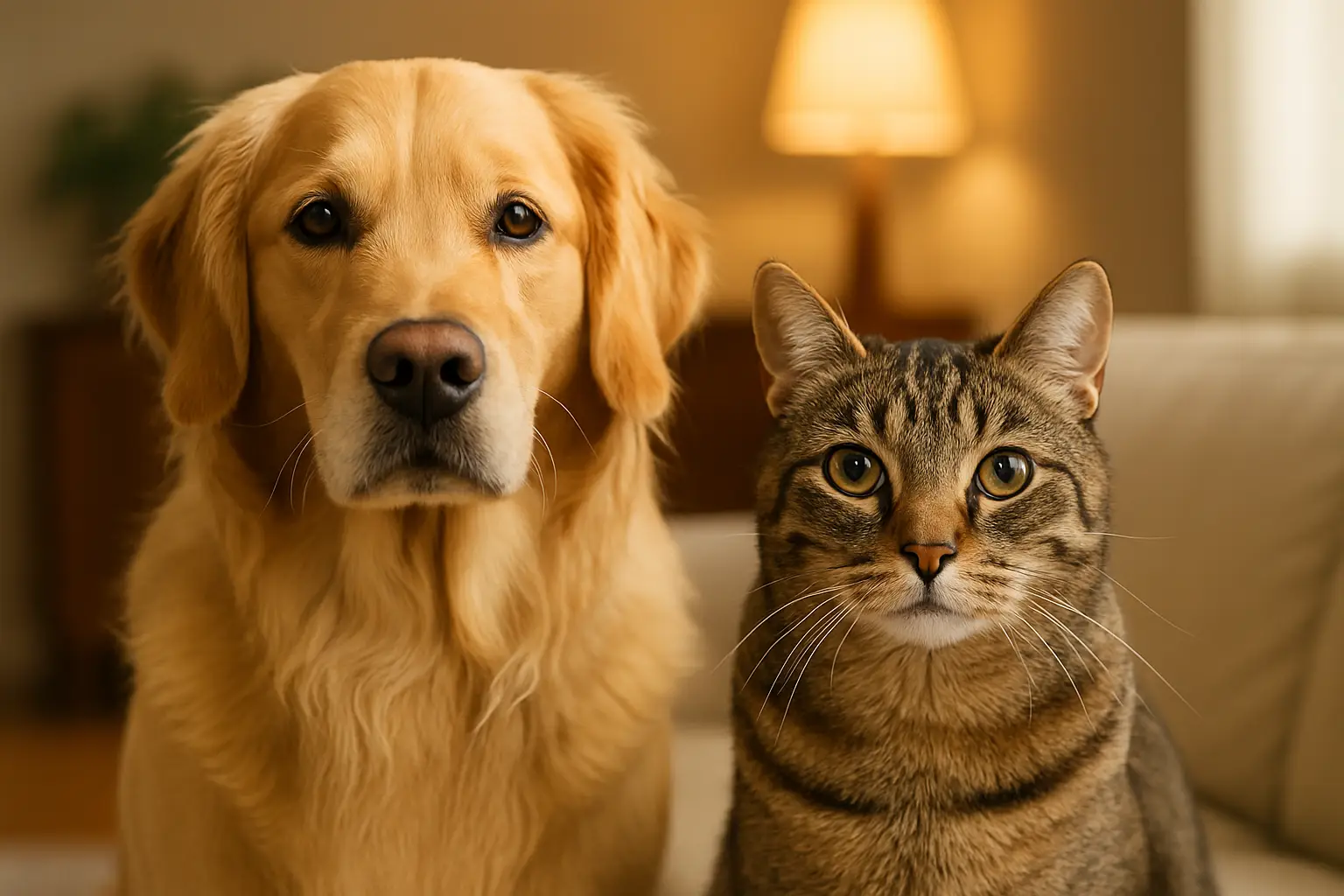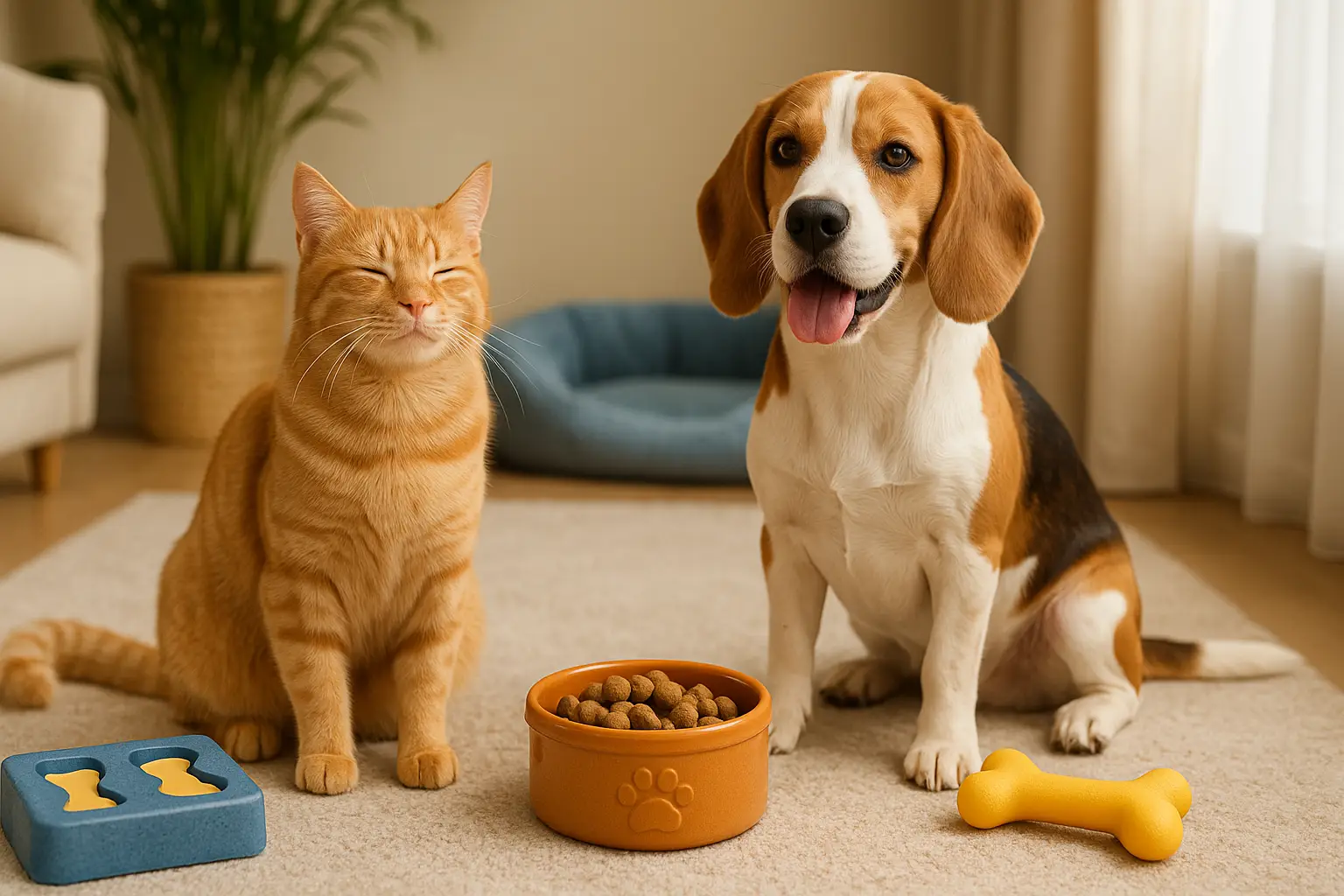How to Read Your Pet’s Body Language
Our pets are constantly communicating—but they rarely use sound to do it. Through posture, movement, tail position, and even the direction of their gaze, dogs and cats express how they feel, what they want, and whether they feel safe.
Understanding pet body language doesn’t just make you a better companion—it helps prevent misunderstandings, reduces behavioral issues, and deepens the trust between you and your animal. You begin to respond not just to what your pet does, but to how they feel underneath the action.
In this comprehensive guide, you’ll learn how to decode common body language cues in both dogs and cats—and what to do when your pet is trying to “tell” you something important.

Why Body Language Matters More Than Words
Pets experience the world through instinct, energy, and physical signals—not through language or logic.
Benefits of Reading Pet Body Language:
- Improves safety during interactions
- Prevents biting, scratching, or fearful reactions
- Helps you intervene before anxiety escalates
- Builds a deeper emotional connection
- Increases training effectiveness through timing and empathy
By learning to see what your pet is silently expressing, you become their trusted translator.
Step 1: Understand the Basics of Body Language
Let’s start with the core principles of how animals communicate physically.
Dogs:
- Tail movement, position, and stiffness
- Ears forward, sideways, or back
- Eye shape and gaze
- Mouth tension or panting
- Body posture and overall stillness or wiggle
Cats:
- Tail flicking, puffing, or curling
- Ears upright, rotated, or flat
- Eyes dilated, blinking, or wide
- Whisker position
- Spine arching, crouching, or stretching
Each movement tells a story—especially when seen in context.
Step 2: Know the Signals of Relaxation
When your pet is calm and safe, their body is loose, balanced, and natural.
Relaxed Dog:
- Soft eyes with slow blinks or brief eye contact
- Neutral ears (not perked or pinned)
- Loose jaw, possibly slightly open
- Wagging tail at mid-height or slowly swaying
- Even weight distribution or side-laying position
Relaxed Cat:
- Blinking slowly or resting with eyes half-closed
- Tail loosely wrapped or extended
- Ears forward or slightly sideways
- Grooming, stretching, or gentle rolling
- Exposed belly (not always an invitation to touch!)
This is the ideal state for training, play, and interaction.
Step 3: Spot the Signs of Stress
Subtle changes indicate that your pet is uncomfortable or unsure.
Early Stress Signs in Dogs:
- Lip licking (outside of mealtime)
- Yawning repeatedly
- Avoiding eye contact
- Ears pinned back
- Tail tucked slightly or stiff at base
- Shaking off (like shaking water, but dry)
Early Stress Signs in Cats:
- Sudden grooming of one spot (displacement grooming)
- Hiding or crouching low
- Tail flicking or twitching
- Dilated pupils
- Freezing or backing away
At this stage, you can reduce pressure, change environments, or slow your pace to support them.
Step 4: Recognize Fear or Overstimulation
These signals mean your pet is moving from discomfort toward possible panic or defense.
Escalated Fear in Dogs:
- Tail fully tucked
- Whale eye (whites of eyes visible)
- Growling or showing teeth
- Rigid body
- Snapping or lunging
Escalated Fear in Cats:
- Tail puffed or straight up
- Ears flat to the head
- Hissing or growling
- Arched back or sideways stance
- Swatting or bolting
At this stage, the priority is to create space, remove triggers, and allow decompression.
Step 5: Decode Tail Language
Tail position is a powerful indicator of emotion—but it varies between species.
Dog Tail Signals:
- High and wagging fast: Excited or aroused (can be friendly or reactive)
- Mid-height and wagging loosely: Relaxed and social
- Low or tucked: Fearful or submissive
- Stiff and straight: Alert, tense, or potentially reactive
Cat Tail Signals:
- Upright with tip curled: Friendly and confident
- Swishing back and forth: Annoyed or overstimulated
- Flicking rapidly: Agitated or angry
- Wrapped around another animal/human: Affectionate or seeking contact
- Puffed tail: Frightened or defensive
Always combine tail language with the rest of the body posture.
Step 6: Watch the Eyes and Ears
The eyes and ears reflect internal states quickly and clearly.
Dog Eye and Ear Language:
- Soft eyes: Calm and trusting
- Dilated pupils: Fear or arousal
- Squinting: Discomfort or tension
- Ears forward: Alert or curious
- Ears back or pinned: Submissive, scared, or defensive
Cat Eye and Ear Language:
- Slow blink: Trust and affection
- Dilated pupils: Fear, play, or excitement
- Narrowed eyes: Irritation or alertness
- Ears swiveling: Trying to track sounds or assess
- Ears flattened: Aggression or fear
Quick shifts in eye or ear movement often signal incoming behavior changes.
Step 7: Understand Vocalization in Context
Barking, meowing, growling, or purring are part of body language too—but must be interpreted with posture.
Dogs:
- Happy bark: Loose body, wagging tail, playful bow
- Alert bark: Upright body, stiff tail, ears forward
- Growl with wag: Conflicted feelings—watch carefully
- Whine: Seeking attention or release from tension
Cats:
- Meow: Greeting, demand, or response
- Trill: Friendly and happy
- Hiss: Warning—back off
- Purr: Contentment, or sometimes pain (context matters)
Don’t isolate the sound from the visual cues.
Step 8: Learn the Signs of Play
Play can look aggressive—but has distinct markers.
Play Signals in Dogs:
- Play bow (front legs down, rear up)
- Loose, exaggerated movements
- Stop/start behavior
- Soft mouthing or rolling
- Sneezing or play-growling
Play Signals in Cats:
- Chasing toys or flicking tails
- Pouncing without claws
- Bunny kicks with control
- Running bursts with stops
- Wide eyes with relaxed body
If it escalates into stiff posture or hissing, it’s time for a break.
Step 9: Recognize the Signals of Affection
Love looks different in every species.
Dogs:
- Leaning into your body
- Resting head or paw on you
- Soft eye contact
- Nudging for touch
- Sleeping nearby
Cats:
- Head bunting or cheek rubbing
- Slow blinking
- Kneading with paws
- Purring with soft body
- Tail wrapped around your hand or leg
Learn your pet’s specific love language.
Step 10: Use Your Own Body Language Wisely
Pets read us too—often more than we realize.
To Build Trust:
- Use soft eye contact
- Move slowly and predictably
- Lower yourself to their level without looming
- Avoid direct frontal approach—especially with shy animals
- Pair touch with calming words and smiles
Your energy becomes the safety signal they rely on.
Step 11: Respect the Signals
The most respectful thing you can do is listen—and respond appropriately.
Always:
- Pause if your pet pulls away or freezes
- Step back if posture becomes stiff
- Use space and time to de-escalate tension
- Don’t force petting or play when signs of discomfort appear
Trust grows when communication is honored.
Final Thoughts: Body Language Builds the Bond
Learning to read your pet is like learning a new language—one made of movement, rhythm, and feeling. It takes observation, patience, and love.
But once you see what your dog or cat has been trying to tell you all along, your relationship changes forever. It becomes deeper, safer, and more joyful.
Because when you listen with your eyes—and respond with your heart—you and your pet speak the same language.




Post Comment